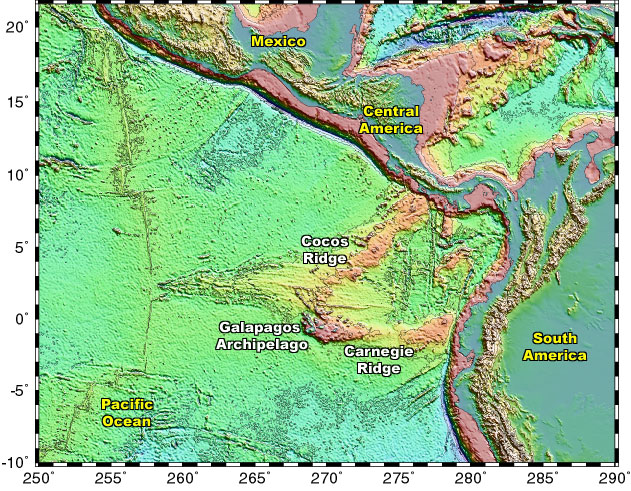|
The Regional Setting of the Galapagos Archipelago Regional View of the Galapagos Archipelago  | | A regional view of the Galapagos Archipelago. The submerged Carnegie and Cocos Ridges and the Galapagos Platform are a light red color. The Galapagos Islands sit atop the Galapagos Platform and are colored light blue. Bathymetric and topographic data compiled by: Smith, W. H. F. and D. T. Sandwell, Global Seafloor Topography from Satellite Altimetry and Ship Depth Soundings, Science, v. 277, p. 1956-1962, 26 September, 1997. |
The Galapagos Islands are a group of islands located 600 miles west of Ecuador in the east Pacific Ocean. These islands are formed by volcanic activity occurring in the middle of one of Earth's tectonic plates. The present-day Galapagos hotspot shows an above surface expression of a group of oceanic volcanoes composed of thirteen major islands. The past location of the hotspot can be traced as two ridges on the seafloor, the Cocos and Carnegie ridges, which extend from the Galapagos Archipelago to the Central and South American trenches, where they are subducting into the mantle. These ridges are similar in age and formed when oceanic crust moved over the Galapagos hotspot, leaving a pathway for animals to migrate over time. It is believed that the Galapagos Archipelago has existed continuously for the past fifteen million years.
|







